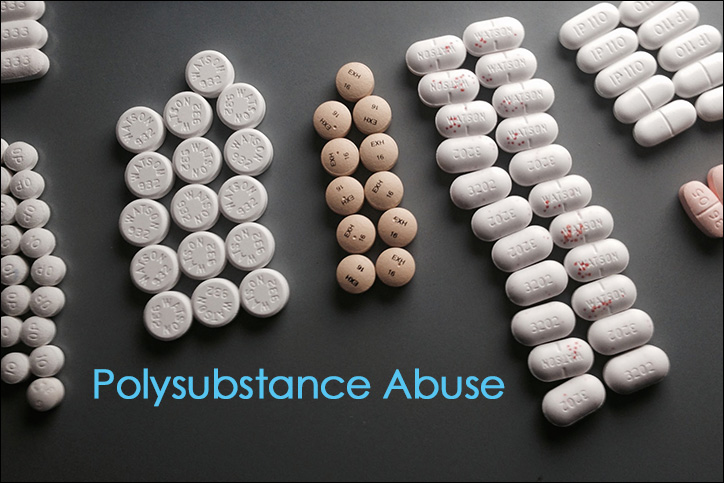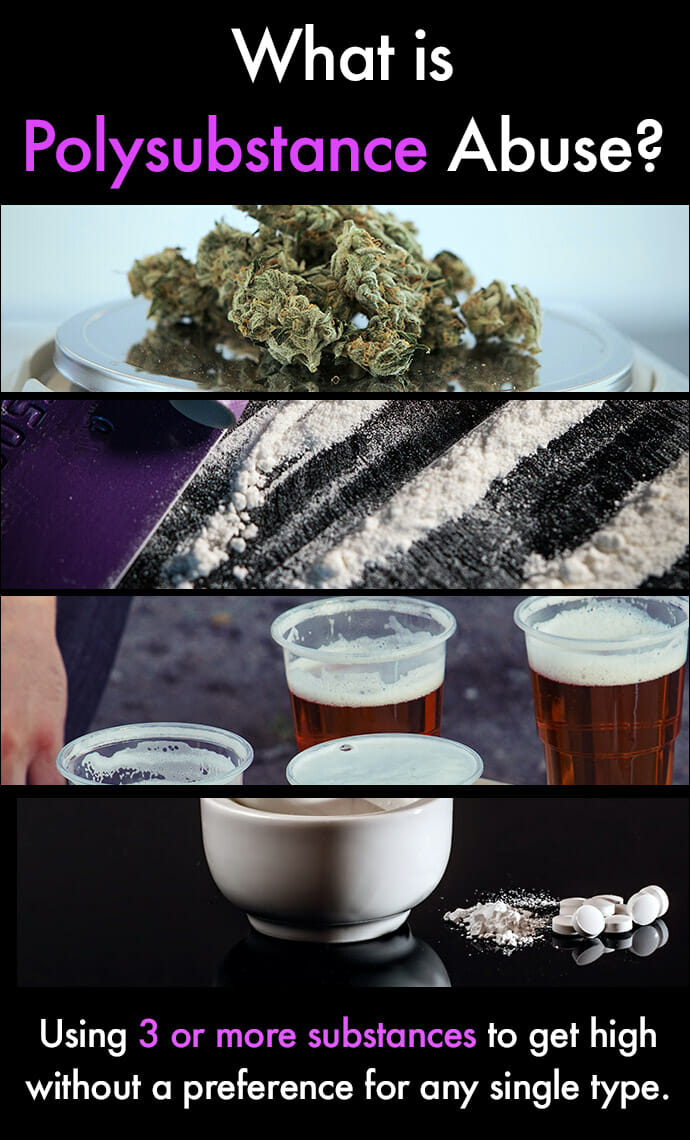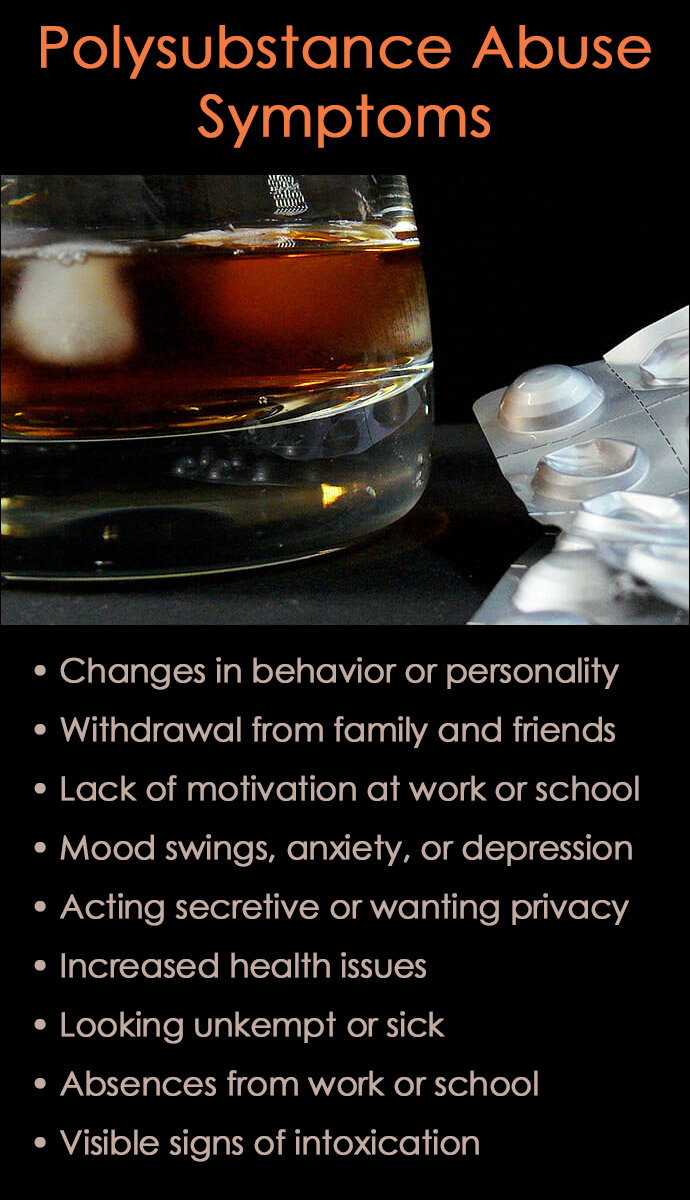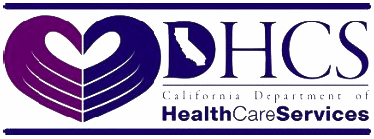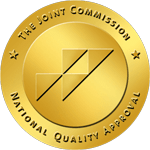Table of Contents
While the term “substance abuse” has made its way into the mainstream, with most people understanding that it’s a condition related to the disease of addiction, few people are aware of a similar condition referred to as polysubstance abuse.
Understanding the difference between substance abuse and polysubstance use is important for identifying the signs of long-term use, the added health risks, and the specific challenges that can manifest during treatment.
What is a Polysubstance Abuse Definition?
A simple polysubstance abuse definition is a person who habitually uses multiple substances without showing a specific preference to any single one of them.
Sometimes referred to as a “polyaddict,” this describes a person who is interested in getting high with any variety of substances, instead of a person who is only addicted to a specific type of substance such as alcohol, cocaine, or opioids.
The Diagnostic and Statistical Manual of Mental Disorders (DSM-5), published by the American Psychiatric Association, ultimately eliminated the diagnosis that was referenced in the previous DSM-IV version because it was often misunderstood.
A new substance disorder threshold, with a “two or more” criteria, replaced the polysubstance use term to describe drug use patterns.
Despite the change in the diagnostic language, polysubstance misuse is a distinctive type of dependency and mental health disorder.
The hallmark of polysubstance dependence is an individual’s use, dependence, or addiction to the mind and mood-altering effects of drug use.
This differs from drug addiction to a single substance, like prescription opioid painkillers, that is driven by a need to not only get “high,” but also to avoid painful withdrawal symptoms.
Poly-drug users are generally looking for simultaneous use of a combination of drugs that enhance the other’s effects, creating a “high” that is perceived as better than the effects of a single substance.
When users mix multiple substances to amplify the effects of one substance it is known as a synergism.
An example of this might be using alcohol, marijuana, and cocaine together at the same time. If that specific combination is not available, a drug like methamphetamine might replace cocaine.
Poly drug users are generally chasing a specific psychoactive stimulant effect created by various drug combinations, with the high itself being more important than the actual drugs used.
The Dangers of Polysubstance Dependence
It’s necessary to point out that drug abuse of any kind is not limited to just illegal drugs and alcohol, and misusing legal ones can also have long-term effects on a person’s health. The misuse and abuse of legal prescription drugs, reports the National Institute on Drug Abuse (NIDA), is actually currently on the rise.
So, any combination of misused drugs might also include the non-medical use of prescription medications.
One of the reasons polysubstance drug combinations are so dangerous is due to the unknown reaction that more than one drugs of abuse will have on the others.
All drugs come with potential side effects, yet when they are combined with other substances, the potential for more severe outcomes increases exponentially.
In addition, the effects of one drug, such as alcohol, might greatly increase the addictive nature or dangers of another drug, like benzodiazepines. The combination of benzodiazepines and alcohol can increase the risk of drug overdose deaths and place a person’s long-term health in greater jeopardy.
Even more chilling is the difficulty first responders may have in resuscitating a polysubstance use victim who is experiencing a substance overdose.
While a drug like naloxone can help save a person is having an opioid overdose, it will have no significant effect on a patient that has overdosed on a combination of cocaine, alcohol, meth, or other drugs.
Typical Polysubstance Use Combinations
Alcohol is considered the most abused substance in the United States and is often included for those who engage in polysubstance use.
The simultaneous use of alcohol and prescription medications follows regular patterns of polysubstance dependency.
Research has shown that incidents of prescription drug abuse are nearly 20 times more likely in people who abuse alcohol.
Drugs commonly misused in combination with other substances can include:
- Alcohol
- Prescription Painkillers like Oxycodone, OxyContin, Percocet, or Vicodin
- Benzodiazepine Prescriptions such as Xanax, Valium, Klonopin, or Ativan
- Marijuana
- Cocaine
- Methamphetamine
- Heroin
- Psychedelics including LSD, Ecstacy, Mushrooms, Peyote, Ayahuasca, Mescaline
Polysubstance Addiction Symptoms
It may be difficult to distinguish whether a person is addicted to the use of multiple substances as compared to a single substance use disorder.
Both conditions present with similar effects, so displaying a number of negative symptoms may signify some form of substance dependence or addiction.
Common signs and symptoms of substance use disorder can include:
- Sudden change in behavior and personality
- Withdrawal from family, friends, and activities once enjoyed
- Lack of motivation at work or school
- Mood swings, along with bouts of anxiety or depression
- Acting secretively or demanding unreasonable amounts of privacy
- Increased health issues
- Looking disheveled, unkempt, or regularly appearing to be sick
- Unexplained absences from work, school, or home
- Visible signs of intoxication, such as slurred speech, dilated pupils, coordination issues, bloodshot eyes, clenched jaw, or speaking faster or more slowly than normal
Every individual is different and some people may not show all of the above outward symptoms associated with polysubstance addiction. However, addressing a person’s troubling behavior with compassion and understanding may be enough to open a dialogue about seeking help.
Addiction Treatment for Polysubstance Use
Addiction treatment options can be challenging because each person’s patterns of use is not necessarily driven by the physical and psychological need for just one substance like with an alcohol use disorder. Instead, an individual might be chasing the combination of alcohol and drug effects.
Like any form of drug use disorder though, polydrug abuse is treatable. The most effective treatment outcomes can be found at a residential, inpatient treatment program with a trained staff of addiction professionals.
The first phase of substance use disorder treatment usually requires drug and alcohol detox provided by medical professionals who are experienced in safely and comfortably overcoming withdrawal symptoms.
The safe haven of a residential facility allows a person time to safely detox and then begin to address the underlying causes of drug use and addiction.
Therapies usually include one-on-counseling, group therapy and, if appropriate, family counseling.
Specific recovery modalities such as Cognitive Behavioral Therapy (CBT) and relapse prevention therapy should also be provided as a way to create a strong foundation for lasting recovery.
Cognitive behavioral therapy techniques have shown to be effective for a wide range of substance abuse and mental health conditions.
If a mental health issue like depression or PTSD is also present with the use of a drug or alcohol, dual diagnosis treatment for a co-occurring disorder will be necessary to recover from both conditions.
Whether it’s polysubstance use disorder or a single drug misuse, the disease of addiction is treatable.
Countless people who struggled for years with drug and substance use addiction are now living happy, healthy, and productive drug-free lives because they decided to seek treatment.
